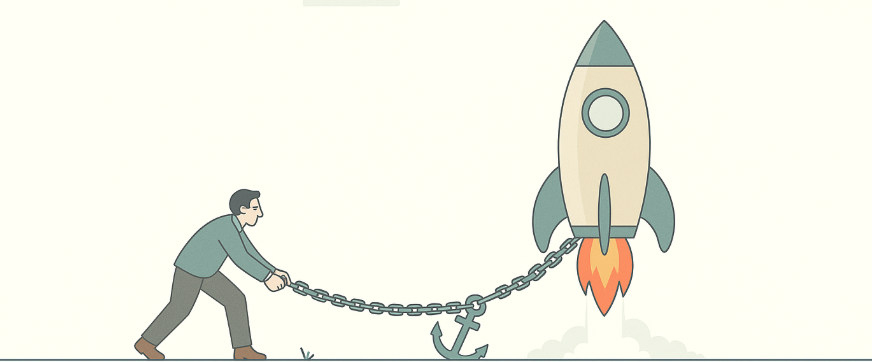Why Real Estate Stays 10 Years Behind on Technology
A commercial real estate firm spends 4 hours weekly on what could be a 30 sec click. Here's why real estate is behind on technology; and how to fix it.

"Real estate is behind on marketing, on sales tools, on everything by a solid 10 years compared to Silicon Valley."
Kevin said this casually. He spent 10 years in tech before commercial real estate. He knows what good looks like.
"This industry is so garbage. It's bad."
What "10 years behind" actually looks like
Kevin's firm generates trade record sheets manually. 4 hours a week copying data from QuickBooks into Word templates.
Commission tracking? Spreadsheets. Emailed around. Version conflicts.
Contact management? Gmail folders.
Document storage? Google Drive with inconsistent naming. "Deal - 123 Albert St" vs "Albert Street 123 - Documents" vs "123AlbertStDeal_Final_v2."
Pipeline visibility? You have to ask someone.
This isn't a struggling firm. They're successful. Growing. They're not behind because they're failing.
They're behind because deals still close without automation.
Why industries stay behind
I've been thinking about this. It's not laziness. It's not stupidity.
1. No burning platform
The manual process works. Painful, but functional. Where's the crisis forcing change?
Research shows 91% of SMBs believe technology is critical to their success. But only 29% have a formal technology plan.
That's a 62-point gap between knowing and doing.
2. Technology feels like a risk
Trade record sheets are legal documents. One formula error? That's a lawsuit.
"We've always done it this way" feels safer than "try this automation."
3. The team won't use it
"People in this business don't want to learn three new tools. It's not going to happen."
His team are brokers and agents, not developers. They need solutions that just work, not platforms that requiring learning.
4. Everything's fragmented
MLS is one system. Accounting is another. Document signing is another. Marketing is another.
Nobody wants to be the integration layer. So they stay manual.
What actually works
Not "real estate software." Kevin tried those. They're built for the industry as it is, not as it should be.
Here's what we're doing instead:
Start with the 4-hour problem
Not "imagine a world where..." Just: "You spend 4 hours on trade record sheets. What if it took 30 seconds?"
Make the new thing look like the old thing
Kevin's automated trade record sheets look identical. Same font. Same layout. Same signing block.
Automate the workflow, not the appearance.
One workflow at a time
Trade record sheets first. Then deposits. Then pipeline.
Not all at once.
Keep the escape hatch
If the automation fails, the manual process still works. No one's trapped.
Hide the complexity
Kevin's agents click one button. They don't see the 1700 lines of code connecting QuickBooks to Airtable to PDF generation.
They just see: "Generate TRS" → done. 30 seconds.
The real insight
Kevin said "10 years behind." But I don't think that's quite right.
The opportunity isn't catching up to Silicon Valley.
It's applying technology to specific workflows that SaaS companies ignore.
Kevin doesn't need Salesforce. He needs a workflow that makes sense for commercial real estate.
He doesn't need Monday.com. He needs deal pipeline that reflects how brokers actually work.
The gap isn't just a problem. It's a competitive advantage.
His competitors are still spending 4 hours a week on trade record sheets. Kevin is going to spend 10 minutes checking data and 30 seconds creating the TRS.
They're dealing with formula errors in commission spreadsheets. Kevin's pulling directly from QuickBooks and auto-matching billed vs actuals.
They're asking "where are we on the Albert Street deal?" Kevin's looking at a dashboard.
If you're in an industry that's "behind"
You're probably not behind because you're stuck. You're behind because:
- The manual process still works (barely)
- The risk feels high
- Your team won't adopt complicated tools
- Generic SaaS doesn't fit your workflow
You don't need to "modernize."
You need to automate exactly what you do now—just make it not take 4 hours.
That's it.
